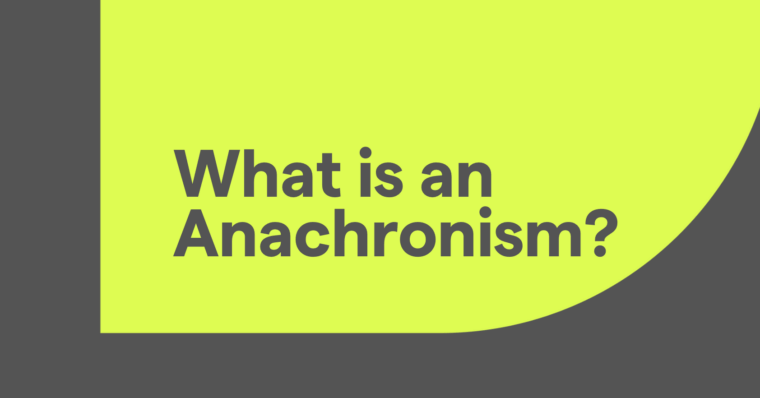
Wrapping up a paper may seem simple enough, but if you don’t know how to write a research paper conclusion, it can sometimes be the hardest part of the paper-writing process.
In this guide, we share expert advice on how to write a research paper conclusion. We explain what to put (and what not to put) in a research paper conclusion, describe the different types of conclusions, and show you a few different research paper conclusion examples.
What is a research paper conclusion?
A research paper conclusion should summarize the main points of the paper, help readers contextualize the information, and as the last thing people read, be memorable and leave an impression. The research paper conclusion is the best chance for the author to both reiterate their main points and tie all the information together. All in all, it’s one of the most important parts of writing a research paper.
Research paper conclusions are generally one paragraph long, although more complicated topics may have longer conclusions. Although conclusions don’t normally present new information or data that wasn’t mentioned in the article, they often reframe the issues or offer a new perspective on the topic.
6 elements to include in a research paper conclusion
1 Urgency or consequences
A good conclusion answers the question, Why should the reader care? To connect the information to the reader, point out why your topic should matter to them. What happens if the problem persists, or how can the problem be solved? Feel free to mention common obstacles that feed the problem, implications of the data, or a recommended action for fixing it.
2 Reminder of thesis statement
Research paper conclusions are a great place to revisit your initial thesis statement, a sentence that encapsulates the main topic or problem your paper addresses. Thesis statements are discussed heavily at the beginning of a paper, but they can be even stronger when you reintroduce them at the end, after you’ve presented all your evidence.
3 Recap of main points
Although you don’t want to repeat yourself just for the sake of repetition, a recap of your main points can be helpful to your reader. Think of these as your paper’s “key takeaways,” the parts you want readers to remember. Save the details for the body text and use the conclusion to remind the reader of your strongest supporting evidence before they put your paper down.
4 Parallels to the introduction
The introduction and the conclusion are two sides of the same coin. A useful strategy to consider as you approach writing a research paper conclusion is to follow the same structure or address the same themes as you do in the introduction. For example, if you pose a question in your introduction, you can answer it directly in your conclusion. Keep this in mind when writing your research paper outline so you can properly plan both parts.
5 Limitations of the study
Although this isn’t applicable to every research paper, if you’re writing about actual tests or studies you’ve conducted, there are some ethical requirements for what you put in a research paper conclusion. Specifically, you’re expected to address the limitations of your study; these may include criticisms or flaws in your process that might have affected the results, such as using suboptimal participation groups. It’s best to call these out yourself rather than having a colleague call them out later.
6 Conciseness
Above all, every research paper conclusion should be written with conciseness. In general, conclusions should be short, so keep an eye on your word count as you write and aim to be as succinct as possible. You can expound on your topic in the body of your paper, but the conclusion is more for summarizing and recapping.
5 elements not to include in a research paper conclusion
1 Dry summary
Summarizing may be a crucial part of research paper conclusions, but it’s not the only part. Your conclusion should be more than just a summary; it should shape the way your reader thinks about your topic. Don’t just repeat the facts: Contextualize them for the reader, offer a new perspective, or suggest a step for solving the problem.
2 Generic or clichéd phrasing
Just like our advice for how to write a conclusion for a more general essay, you should also avoid generic or clichéd phrasing in research paper conclusions. Some words or phrases are overused in conclusions to the point of becoming trite. If you want your conclusion to seem fresh and well-written, avoid these phrases:
- in conclusion
- in closing
- in summary or in summation
- to sum up
- to wrap up
3 New data or evidence
Conclusions are not the place to introduce new evidence or data, especially if they are significant enough to reframe your entire argument. Hard facts and supporting evidence belong in the body of the paper; when the reader is absorbing this section, they’re still actively learning about the topic. By the conclusion, the reader is almost done forming their opinion. The conclusion is more about retrospection; introducing unexpected information there can frustrate readers just as much as it surprises them.
4 Ignoring negative results
It might be tempting to sugarcoat negative results or ignore them completely, but that will only harm your paper in the end. It’s always best to own up to any shortcomings in your research and admit them overtly. Your transparency not only helps validate your other research, but it also prevents critics from pointing out these same shortcomings in a more damaging way.
5 Ambiguous resolutions
Part of the appeal of research paper conclusions is the closure they bring; they’re supposed to wrap up arguments and clean up any loose ends. If your conclusion is ambiguous, it can give the impression that your research was incomplete, inadequate, or fundamentally flawed. Rather, write your conclusion with direct language and take a firm stance. Even if the data was inconclusive, state definitively that it was inconclusive. This kind of clarity in writing makes you sound both confident and competent.
Types of research paper conclusions with examples
Although there are no formal types of research paper conclusions, in general they tend to fall into the categories of summary, commentary, and new perspective. Bear in mind that these aren’t mutually exclusive—the same research paper conclusion can summarize and present a new perspective at the same time. Consider mixing and matching parts from each to create the unique blend your own paper needs.
Research paper conclusion example: Summary
The most common type of research paper conclusion is the straight summary, which succinctly repeats the key points of the paper. Keep in mind that a conclusion should do more than merely summarize, so be sure to add some lines that offer extra value or insight.
Like all great scientists, Isaac Newton was able to condense his ideas, however complicated, into the simple and brief laws discussed above. Newton’s law of inertia, his law of action/reaction, and his equation of F=ma—along with his law of gravity, also discussed above—combine to form the very foundation of classical mechanics. Without his laws, physics as we know it wouldn’t exist.
Research paper conclusion example: Commentary
The conclusion can be an opportunity for a writer to share their own personal views. This is especially useful in scientific writing, where the body of the paper is reserved for data and facts, and the conclusion is the only section for personal opinion. Just be careful about getting too subjective—this is still a research paper, not a personal essay.
As you can see by the cause-and-effect relationships pointed out above, an attack on journalism in one part of the world is an attack on journalism everywhere. Though the issue might seem distant, it’s actually right on our doorstep. All of us need to start standing up to the powers that censor the truth and defend the brave journalists who risk their lives to deliver it.
Research paper conclusion example: New perspective
Research paper conclusions are the perfect place to offer a new perspective on your topic. After presenting all your evidence and research, you can now draw connections and synthesize the data to create a unifying theory or new angle. The conclusion is the best place to include this, as the reader is already familiar with all the essential details.
You’ll notice that the studies we examined all come to the same conclusion: Remote working increases both production and employee satisfaction. Ultimately, the idea that remote work hinders productivity is a lie. In fact, the research suggests clearly that remote work should be increased, not done away with. If remote work becomes the norm instead of the exception, businesses could actually achieve new heights.
Research paper conclusion FAQs
What is the purpose of a research paper conclusion?
The purpose of a research paper conclusion is to summarize the main points of the paper, help the reader contextualize the information, and leave a lasting impression on the reader.
What should you include in a research paper conclusion?
A research paper conclusion should include a summary of the key points in your paper. Additionally, the conclusion can reframe the research in a way that’s easier for the reader to understand, often by adding urgency or explaining consequences. The conclusion is also used to mention the limitations of your research, such as an inadequate number of participants.
What are the different kinds of research paper conclusions?
Although there are no formal categories of research paper conclusion, in general research paper conclusions tend to fall into the categories of summary, commentary, and new perspective. Bear in mind that these aren’t mutually exclusive—the same research paper conclusion can both summarize the paper and present a new perspective.





